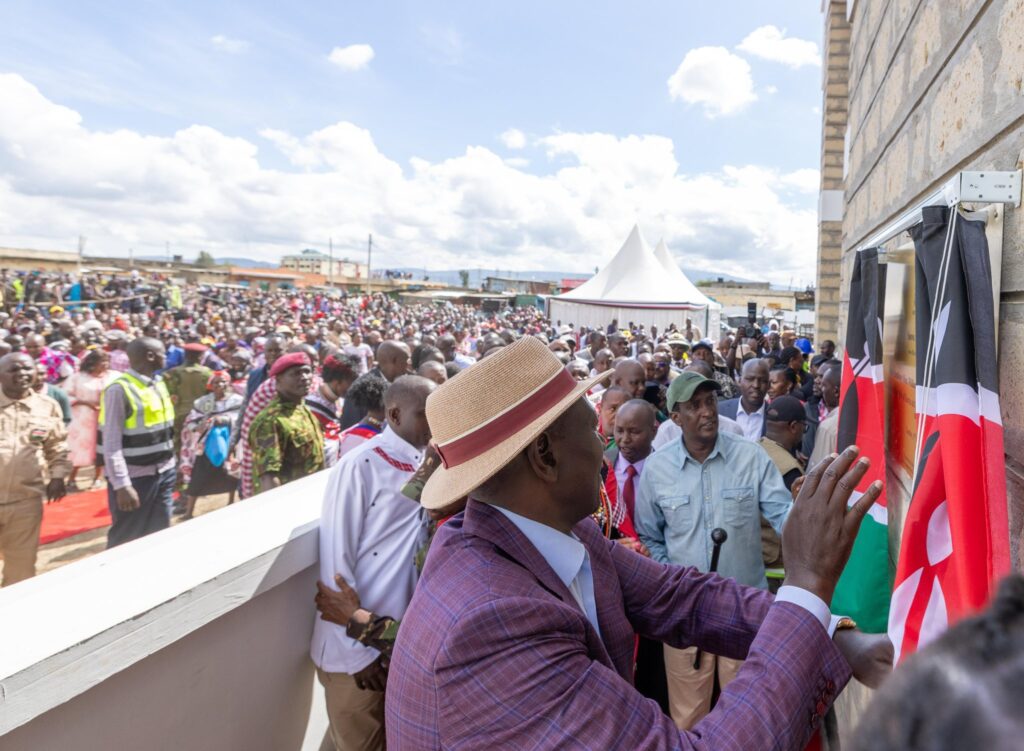President William Ruto has doubled down on his promise to fulfill all pledges he made during the 2022 general elections, asserting his administration’s unwavering commitment to national transformation by 2027. Amid growing criticism and skepticism from opposition leaders and civil society groups, the President maintains that his government is actively rolling out strategic development programs across the country. “There are people accusing me of lying to Mama Mboga. I will put all those people to shame,” Ruto declared during his recent tour in Narok County, emphasizing that he will deliver on all commitments, no matter the opposition or delays encountered.
Among the flagship projects initiated under Ruto’s administration is the aggressive rollout of youth-targeted digital hubs in counties, aimed at equipping young Kenyans with ICT skills and linking them to global digital job opportunities. These innovation hubs are being set up in sub-counties nationwide, enabling the youth to participate in e-commerce, digital marketing, content creation, and remote work. This initiative supports Ruto’s bottom-up economic model and reflects his commitment to youth empowerment and job creation, especially in marginalized and underserved regions.
Housing remains a centerpiece of Ruto’s campaign promises. The Affordable Housing Programme, now active in several counties including Nairobi, Kiambu, Machakos, and Nakuru, is designed to address the growing urban housing crisis while creating thousands of construction jobs. Through partnerships with private investors and county governments, Ruto’s administration is constructing tens of thousands of low-cost housing units. These projects not only address urban congestion but also stimulate economic activity through local sourcing of building materials and labor.
Infrastructure development has also been a significant area of focus, with the government accelerating the construction of key road networks, bridges, and electricity connectivity in remote regions. Roads like the Talek–Ewaso Ngiro–Ng’oswani–Maasai Mara and others across the North Rift and Coast regions are being improved to support tourism and trade. Electrification efforts under the Last Mile Connectivity Project are expanding, bringing power to rural homes and businesses, aligning with Ruto’s promise to make electricity a basic right for every Kenyan.
Market infrastructure has seen major upgrades, as highlighted by the recent launch of the 30,000-capacity Suswa market and the Ntulele market in Narok County. These modern facilities include kitchens, eateries, cold rooms, and meeting halls—boosting the dignity and productivity of local traders. During the event, President Ruto pledged KSh 2.5 million to assist women vendors in transitioning from makeshift stalls into these new market centers. Such initiatives aim to revitalize grassroots commerce and improve working conditions for informal traders.

President Ruto’s recent remarks in Narok also shed light on the broader national security and accountability measures his government is pursuing. Addressing a scandal involving rogue job brokers who duped Kenyan youth with false promises of overseas employment, Ruto vowed to ensure justice. He assured the victims that his administration is working with Turkish authorities to trace the culprits, even promising to travel to Turkey personally if necessary to recover funds owed to affected Kenyans.
A major highlight of the Ruto administration’s development agenda is its continued collaboration with China in infrastructure and transport. Over the years, China has been a crucial partner in building roads, ports, and railways across Kenya, including the Standard Gauge Railway (SGR). This cooperation remains strong, with new projects under discussion, including highway expansions and urban transport systems. Ruto’s government is keen to sustain this partnership, emphasizing mutual benefit and a focus on completing legacy projects that will boost trade, mobility, and regional integration.
As 2027 approaches, President Ruto is pushing to ensure that no region feels left behind. From Kajiado and Samburu to Migori and Trans Nzoia, development tours have become common, often accompanied by project launches and pledges. While opposition parties continue to accuse the government of falling short on timelines, Ruto remains confident. “It may not happen in a month, or a year,” he said, “but finally by 2027 I will have discharged my commitments and responsibility to the people of Kenya.” Whether through youth empowerment, housing, market modernization, infrastructure or diplomacy, the President seems determined to anchor his legacy on delivery and transformation.










